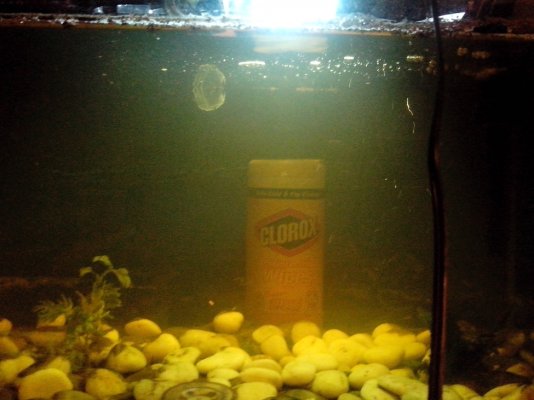Hello, I'll start off by saying that I am a noob when it comes to aquariums. I have just started. A friend of mine is really good with them though and he wanted to try a new method for flooring once he moves out. I told him I'd give it a try in my empty tank so he knows the results before he tries it.
So what I did was, I took some dirt from the back yard, sifted it so I had ONLY dirt and no leafs or branches. I then laid that dirt down, added in 2 live plants, and layed down a layer of rocks. After adding in the water slowly, as you can imagine there was tons of dirt and small things floating and in the water. I have an Aqueon QuietFlow 10 with a filter cartridge Medium. On the back it gives the stages of water filtration. Stage 1: "Dense floss removes particles and debris" stage 2: "Activated carbon removes toxins, odors, and discoloration" stage 3: "Patented Bio-Holster removes toxic ammonia and nitrites" At first the filter did get almost everything out of the water. It's been running this water for 3 days now and it advertises 100 gallons per hour and I have a 15-20 gallon tank. The water is still a green color and when the sun hits it I can see all of the cloudiness in the water. Is this green/brown cloudiness going to get filtered out eventually or will it stay this color?
So what I did was, I took some dirt from the back yard, sifted it so I had ONLY dirt and no leafs or branches. I then laid that dirt down, added in 2 live plants, and layed down a layer of rocks. After adding in the water slowly, as you can imagine there was tons of dirt and small things floating and in the water. I have an Aqueon QuietFlow 10 with a filter cartridge Medium. On the back it gives the stages of water filtration. Stage 1: "Dense floss removes particles and debris" stage 2: "Activated carbon removes toxins, odors, and discoloration" stage 3: "Patented Bio-Holster removes toxic ammonia and nitrites" At first the filter did get almost everything out of the water. It's been running this water for 3 days now and it advertises 100 gallons per hour and I have a 15-20 gallon tank. The water is still a green color and when the sun hits it I can see all of the cloudiness in the water. Is this green/brown cloudiness going to get filtered out eventually or will it stay this color?



